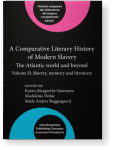Chapter 19
Creating a new abolitionist literature for children
Lydia Maria Child’s The Juvenile Miscellany (1826–1834) between domesticity and racial
hierarchies
This chapter aims to analyze American abolitionist Lydia Maria Child’s first antislavery
stories in The Juvenile Miscellany, the periodical for children she edited from 1826 to 1834
that, through short stories, poems and puzzles, provided amusement and imparted moral lessons to young girls and
boys. The chapter therefore explores Child’s early use of children’s literature as a political instrument to
create a multiracial egalitarian America by educating young minds in a republic that had declared that all men
were born equal but had kept in slavery “that class of Americans called Africans.” Furthermore, it will show how,
although she struggled to fight slavery and racial prejudice, in her abolitionist stories Child often reaffirmed
racial hierarchies and forms of white superiority.
Article outline
- Introduction
- Women, domestic Abolitionism, and the creation of an abolitionist literature for children
- Lydia Maria Child’s abolitionist stories in The Juvenile Miscellany
- Enslaving white children: The white abduction story
- Struggling against racial prejudices: Positive accounts of African Americans
- Atlantic geographies of slavery: United States, western expansionism, and positive accounts of Africa
- The wrongs of slavery, even under a kind master
- Racial hierarchies and White Superiority in child’s abolitionist stories
- Conclusion
- Author queries
-
Notes
-
References
This content is being prepared for publication; it may be subject to changes.
